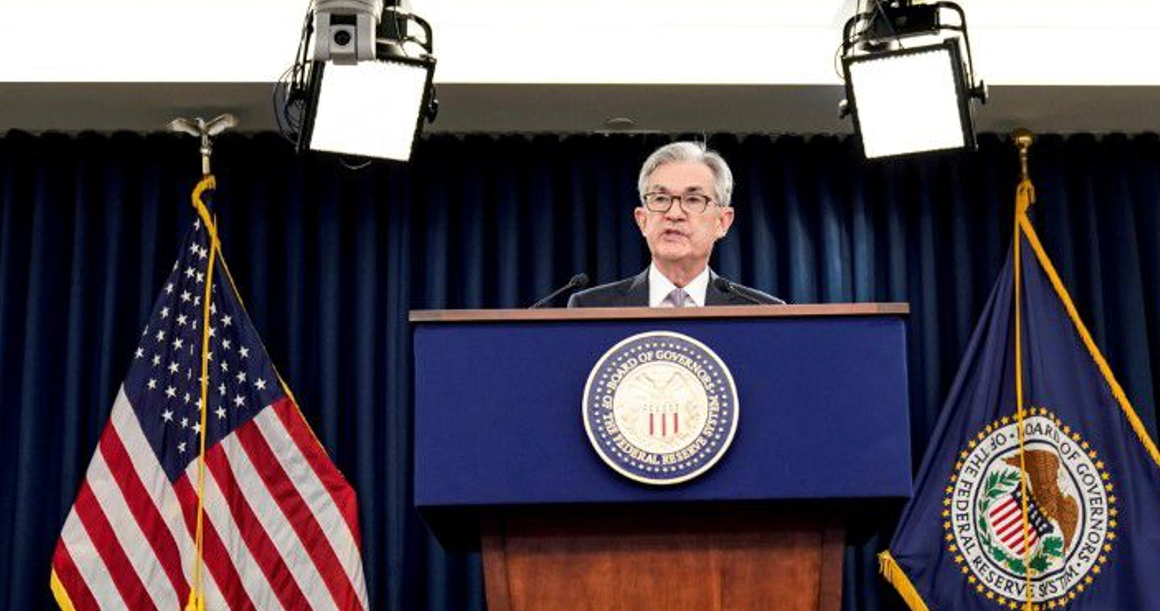Thu Jun 16, 2022
US Federal Reserve Makes the Biggest Rate Hike since 1994
Financial markets were focused on the Fed meeting and rate hike decision yesterday. The Federal Reserve raised its federal funds rate to the range of 1.50 – 1.75 percent with a 75-basis-point tightening, the largest scale in 28 years, above the market participants' forecasts gathered on a 50-basis-point rate hike.
The decision was taken by a 10 'yes' votes of members. Only official in favor of a 50 basis point rate hike was Kansas City Fed President Esther George.

According to the FOMC members, the invasion of Ukraine by Russia is causing tremendous human and economic hardship and the invasion and related events are creating additional upward pressure on inflation and are weighing on global economic activity. In addition, COVID-related lockdowns in China are likely to exacerbate supply chain disruptions, according to the Committee.
While the Committee confirmed that it aims to achieve maximum employment and inflation of 2 percent in the long term, it decided to increase the federal funds rate in order to achieve these goals and predicted that the ongoing increases were appropriate.
The Committee also reminded that For Treasury securities, the cap will initially be set at $30 billion per month and after three months will increase to $60 billion per month and for agency debt and agency mortgage-backed securities, the cap will initially be set at $17.5 billion per month and after three months will increase to $35 billion per month.
Emphasizing that the attitude of the members to monetary policy will be based on incoming economic data, the Committee noted that the monetary policy stance is ready to be adjusted appropriately in the event of risks that may prevent the achievement of the 2 percent inflation target.
In addition, in the Economic Projections Report, the Committee members' gross domestic product (GDP) forecast was reduced from 2.8 percent to 1.7 percent for this year, while it was revised from 2.2 percent to 1.7 percent for 2023 and from 2.0 percent to 1.9 percent for 2024. The 1.8 percent rate was maintained for the long term.
In the report, the PCE projections increased from 4.3 percent to 5.2 percent for 2022, yet it was reduced from 2.7 percent to 2.6 percent for 2023 and from 2.3 percent to 2.2 percent for 2024. Projections for the long term were still at 2.0 percent.
Finally, the rate projections were updated from 1.9 percent to 3.4 percent for this year, from 2.8 percent to 3.8 percent for next year and from 2.8 percent to 3.4 percent for 2024. It was also increased from 2.4 percent to 2.5 percent for the long term.
| Economic Forecasts Report, June 2022 (%) |
| | GDP | Rate | PCE Inflation | Unemployment |
| | March Forecast | June Forecast | March Forecast | June Forecast | March Forecast | June Forecast | March Forecast | June Forecast |
| 2022 | 2.8 | 1.7 | 1.9 | 3.4 | 4.3 | 5.2 | 3.5 | 3.7 |
| 2023 | 2.2 | 1.7 | 2.8 | 3.8 | 2.7 | 2.6 | 3.5 | 3.9 |
| 2024 | 2.0 | 1.9 | 2.8 | 3.4 | 2.3 | 2.2 | 3.6 | 4.1 |
| Long-Term | 1.8 | 1.8 | 2.4 | 2.5 | 2.0 | 2.0 | 4.0 | 4.0 |
Fed Chair Jerome Powell said that they were aware of the difficulty caused by high inflation, emphasizing that they attach great importance to reducing inflation and will act quickly to do so.
Powell also noted that the labor market is extremely tight and that it is important to reduce inflation as soon as possible for the continuity of the labor market. Recalling that they are in the process of seriously reducing the balance sheet, the Chair also added that the pace of interest rate hikes will depend on incoming economic data in future meetings. "Clearly, today’s 75-basis point increase is an unusually large one and I do not expect moves of this size to be common," Mr Powell further noted in the post-meeting press conference.
After the aggressive announcement, there was some recovery in assets with relatively high risk sensitivity when Mr Powell softened the tone of verbal guidance. However, in the Economic Projections Report published by the Federal Reserve, members point to a further tightening of 175 basis points, predicting that rates will be at the level of 3.4 percent by the end of the year, an important signal that the US dollar will increase its pressure on financial assets.
